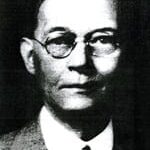
Charles C. Guthrie (1906-1909)
He was an American physiologist born in Gilmore, MO, and graduated (MD) from the University of Missouri in 1901 and (PhD) from the University of Chicago in 1908. He taught physiology while engaged in advanced studies, and was Professor of Physiology and Pharmacology at Washington University from 1906-1909 and at the University of Pittsburgh after 1909. He was author of “Blood-Vessel Surgery and its Applications” (1912) and known for his contributions to blood reactions and alterations, resuscitation, cerebral and other anaemias, isolated and ungrafted tissues, and sutures and anastomosis of blood vessels.
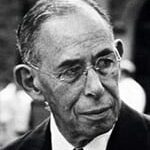
Joseph Erlanger (1909-1910)
He was born in 1874 in San Francisco, CA. Studying chemistry at the University of California, he received a BS degree and later went to Johns Hopkins University to study medicine, where he obtained his MD degree in 1899. After a year of hospital training at the Johns Hopkins Hospital, he was appointed Assistant in the Department of Physiology at the medical school there. Until 1906 he stayed there, as instructor, associate and then associate professor. He was then appointed the first Professor of Physiology in the newly established Medical School of the University of Wisconsin, where one of his pupils was H. S. Gasser, who later collaborated with him. In 1910 he was appointed Professor of Physiology and served as Head of the Department of Pharmacology from 1909-1910, and subsequently Chair of Physiology in the reorganized Medical School of Washington University, St. Louis. He won the Nobel Prize in Physiology or Medicine in 1944 together with H. Gasser “for their discoveries related to the highly differentiated functions of nerve fibers.”
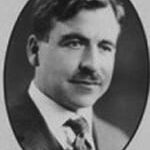
Hugh A. McGuigan (acting head 1909-1910)
(Department known as Pharmacology and Therapeutics for that year only). He was born in Ireland and received his BS degree from North Dakota Agricultural College in 1898. He then spent a year as a student at the University of Michigan (1901-1902). From there he went to the University of Chicago for graduate work. He received his MD degree from Rush Medical College in 1908. He then went to the University of Heidelberg until his arrival in St. Louis in 1909. McGuigan moved to Northwestern University (1910-1917) and then to the University of Illinois (1917-1942).
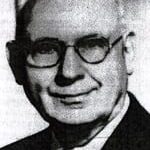
Dennis E. Jackson (1910-1918)
He was born in Ridgeport, Indiana in 1878. He attended the University of Indiana, receiving an AB degree in 1905; an AM degree in 1906 and a PhD degree in Physiology and Pharmacology in 1908. He was Associate in Pharmacology at Washington University from 1910-1915 and Associate Professor from 1915-1918. He received his MD from Rush Medical College in 1913. In 1918, he became Professor and Chairman of Pharmacology and Therapeutics, University of Cincinnati College of Medicine.
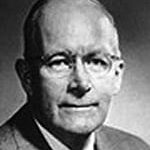
E. Kennerly Marshall, Jr. (1919-1921)
He was born in Charleston, South Carolina in 1889. After graduating from the College of Charleston in 1908, he attended Johns Hopkins University for his graduate years. He received his PhD in chemistry in 1911 and traveled to Europe to study at Abderhalden in the Physiology Institute at Halle. He received his MD from Johns Hopkins University in 1917. He accepted the Chair of Pharmacology at Washington University in St. Louis in 1919. He returned to Johns Hopkins in 1921 as Chair in Physiology.
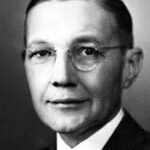
Herbert S. Gasser (1921-1931)
He was born in Platteville, Wisconsin in 1888. After attending the State Normal School, he went on to the University of Wisconsin, where he graduated with an AB degree in 1910 and an AM degree in 1911. There he studied physiology under Dr. Erlanger, with whom he later had a fruitful collaboration. He then went to the Johns Hopkins Medical School for his clinical studies, obtaining his MD degree in 1915. After a year in pharmacology at Wisconsin, he went to Washington University in St. Louis, where he was associated with Dr. Erlanger, becoming Professor and Chair of Pharmacology in 1921. From 1923-1925, he was granted a leave of absence to study in Europe. In 1931, he was appointed Professor of Physiology and Head of the Medical Department at Cornell University, New York City. From 1935 to 1953, he was Director of the Rockefeller Institute for Medical Research. He received the Nobel Prize in Physiology or Medicine in 1944, together with J. Erlanger, “for their discoveries related to the highly differentiated functions of nerve fibers.”
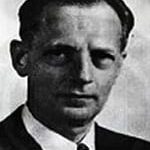
Carl F. Cori (1931-1946)
He was born in Prague in 1896 and spent his childhood in Trieste where his father was director of the Marine Biological Station. After graduating from the Gymnasium in Trieste in 1914, he entered the German University of Prague to study medicine. His interest in science was not surprising – his great-grandfather was an anatomist, his maternal grandfather was a professor of theoretical physics, his uncle was a professor of chemistry, and his father was a zoologist and a marine biologist. In 1931, Cori was appointed Professor and Chairman of the Department of Pharmacology at the Washington University School of Medicine in St. Louis. He received the Nobel Prize with his wife Gerty in 1947 for “their discovery of the course of the catalytic conversion of glycogen.”

Oliver H. Lowry (1947-1976; Interim Head 1989-1991)
Interim Head 1989-1991) He was born in 1910 in Chicago, Illinois. Lowry received a degree in chemistry from Northwestern University in 1932, and in 1937 received both a doctorate in physiological chemistry and a medical degree from the University of Chicago. Lowry joined the faculty of the Washington University School of Medicine in 1947, serving as chair of the Department of Pharmacology from 1947-1976; Dean from 1955-58; and Professor Emeritus of Molecular Biology and Pharmacology from 1975-1996. He was elected to the American Academy of Arts and Sciences in 1957, the National Academy of Sciences in 1964, and the Royal Danish Academy of Sciences in 1968. His paper on protein determination remains the most cited paper in publishing history.

Philip Needleman (1976-1989)
He was born in 1939 in Brooklyn, New York. In 1960, he received a BSc degree from the Philadelphia College of Pharmacy and Science. He continued there as a Graduate Assistant and received an MSc degree in 1962. He then went to the Pharmacology Department at the University of Maryland Medical School. In 1964, he was awarded a PhD degree. He came to Washington University in 1964. He was appointed Assistant Professor in 1967, became an Established Investigator of the American Heart Association (1958-1973), and Associate Professor in 1972. He was promoted to Professor in 1975. He became Head of the Pharmacology Department on July 1, 1976. In 1989, he moved to industry, becoming senior vice president of Monsanto. In 1993, he became President of Searle Research and Development. He was also Senior Executive Vice President and Chief Scientist of Pharmacia from 2000 to 2003. He is the recipient of many awards and honors, including the John Jacob Abel Award of the American Pharmacology Society and membership in the National Academy of Sciences.
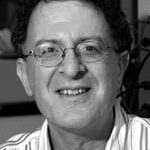
Jeffrey I. Gordon (1991-2004)
He was born in New Orleans and received his bachelor’s degree in Biology in 1969 from Oberlin College in Ohio. His medical training was at the University of Chicago (1973). After two years as intern and junior assistant resident in Medicine at Barnes Hospital, St. Louis, he joined the laboratory of Biochemistry at the National Cancer Institute as a Research Associate in 1975. He returned to Barnes Hospital in 1978 to become Senior Assistant Resident and then Chief Medical Resident at Washington University Medical Center. In 1981, he completed a fellowship in medicine (Gastroenterology) at WUSM. In the following years, Gordon rose quickly through the academic ranks at Washington University: Assistant Professor (1981-1984); Associate Professor (1985-1987); Professor (1987-1991) of Medicine and Biological Chemistry. In 1991, he became Head of the Department of Molecular Biology & Pharmacology (1991-2004). He has many awards and honors, including membership in the National Academy of Sciences. He is currently the Director of the Center for Genome Sciences and Systems Biology (2004-present) at Washington University.
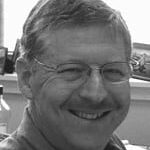
David M. Ornitz (interim head 2005-2009)
He is an Alumni Endowed Professor of Developmental Biology who received his BS degree from the University of California, Davis (1981) and his MD/PhD from the University of Washington, Seattle (1987 and 1988). His postdoctoral training was in the laboratory of Dr. Philip Leder in the Genetics Department at Harvard Medical School in Boston, MA. Dr. Ornitz’s main interests are related to the function of genes in mouse development and physiology and the generation and analysis of mouse models for human disease. He received the Lucille Markey Award (1992), Arnold and Mabel Beckman Young Investigators Award (1994-1996), American Heart Association Established Investigator Award (1998-2001) and other awards/honors. Dr. Ornitz is currently serving as an associate editor for Developmental Dynamics.
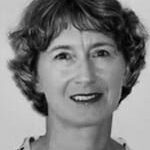
Lila Solnica-Krezel (2010-present)
Dr. Solnica-Krezel obtained her undergraduate training at Warsaw University in Poland (1985, Molecular Biology), PhD in Oncology at the University of Wisconsin-Madison (1991), and postdoctoral training in Developmental Genetics at Harvard Medical School. She developed her independent research program in the Department of Biological Sciences at Vanderbilt University (1996-2009), where she became a Martha Rivers Ingram Professor in Developmental Genetics and University Professor. She has received the March of Dimes Basil O’Connor Award (1997), Pew Scholar in the Biomedical Sciences Award (1998), Distinguished Faculty Member, Vanderbilt University (2005), and other awards/honors. She has been employing the zebrafish model to delineate the molecular and genetic mechanisms of gastrulation, a fundamental process that establishes the germ layers and the body plan of vertebrate animals.